Kayak Rudder VS Skeg: What’s the Difference & Do I Need One?
Kayak Rudder VS Skeg is That little fin thing sticking off the back of some kayaks that has paddlers pondering – rudder or skeg, what’s the diff? These accessories might look similar, but they serve different purposes to help your boat track straight and true.
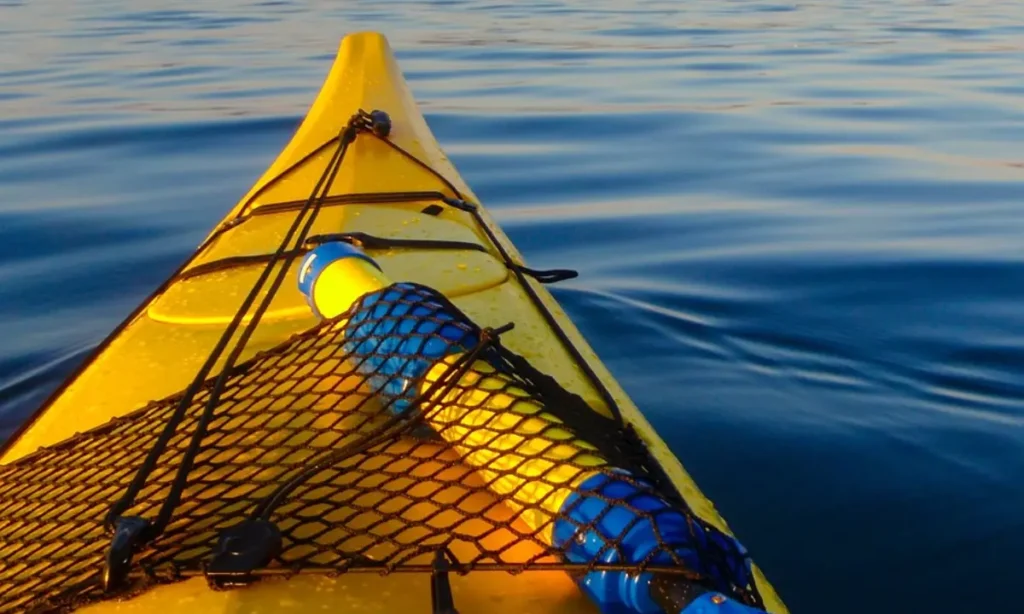
Understanding how rudders and skegs work will point you in the right direction if you’re trying to decide which one is right for you. Let’s dive in and demystify these handy kayak accessories once and for all
A rudder turns your kayak by redirecting water flow.
While A skeg creates resistance to turning from the wind.
Rudders help you actively steer, skegs encourage your kayak to go straight.
Kayaks have come a long way in 4,000 years, but one thing still trips up paddlers – keeping the darn boat tracking straight! Nothing’s more frustrating than constantly zig-zagging all over the place.
Luckily there are some clever accessories to help – kayak rudders and skegs. These fins work by creating drag on the stern to minimize sideways drifting. But which one is best for you?
Well, it depends on a few things: your skill level, the type of kayak you have, and where you paddle. Rudders and skegs each have their pros and cons. A rudder helps you actively steer, while a skeg just encourages straight tracking.
Rudder VS Skeg- What’s the difference? What’s Better?
Understanding How a Kayak Travels Through the Water
Kayaks move forward by pushing water out of the way with the bow. Your paddle strokes provide the force to drive the hull through the water. As you paddle, outside factors like wind and waves push against the hull and keel.
Kayaks aren’t very fast boats. So staying on a straight course is important – it’s the shortest distance between points A and B! Keeping your kayak tracking straight increases paddling efficiency.
What is Kayak Tracking?
Tracking means how straight your kayak goes. Perfectly straight paddling is rare with winds, tides, and waves nudging you off course. You can improve tracking by honing your stroke technique. Long, narrow kayaks also naturally stay straighter.
But the easiest upgrades are rudders and skegs. These fins create drag to counteract the factors pushing your boat sideways. They won’t fix poor paddling but can offset weather and boat wake impacts.
Rudders and skegs are like training wheels to keep your kayak tracking true. They counteract sideways drift so you paddle straight with less effort.
What is Kayak Weather Cocking?
Weather cocking is when wind causes your kayak to turn and face into the wind. It’s like a weather vane spinning to align with the wind direction. This happens because kayaks are not symmetrical – the bow and stern are different shapes. When hit with a crosswind, the bow catches more wind than the stern. This causes the boat to pivot and point into the wind.
Weather cocking can make it challenging to maintain a straight course when paddling in windy conditions. Your kayak will constantly try to swing around and face the wind head-on. It’s an annoying tendency that can waste energy and slow you down.
Understanding kayak weather cocking helps explain why accessories like rudders and skegs are so useful. They counteract this turning force from the wind. This keeps your kayak tracking straight even when winds try to push it off course.
What is a Kayak Rudder?
A rudder is a movable fin that’s attached to the stern of your kayak. It works like a rudder on a boat – you use it to steer and control your direction.
Rudders are operated by foot pedals in the cockpit that let you turn the blade left or right. This deflects water flow and allows you to actively steer your kayak.
Unlike a skeg which just improves straight-line paddling, a rudder lets you make turns and correct your course as needed. It’s handy for navigating winding areas or dealing with winds trying to push you off track.
A kayak rudder is a steering mechanism that gives you more control over the boat using your feet. It’s great for covering long distances efficiently and staying on course, even in challenging conditions.
Pros
Cons
What is a Kayak Skeg?
A skeg is a small fixed fin on the bottom of your kayak near the stern. Unlike a rudder, a skeg does not move side to side to steer. A skeg aims to improve your kayak’s tracking in a straight line. It helps counteract the sideways pushing force of wind and waves.
When these elements hit the side of your kayak, it wants to turn sideways or “weathervane.” The skeg creates drag that resists this turning motion, keeping you paddling straight.
A skeg does not allow active steering like a rudder. It is simply a stabilizing fin to minimize weather cocking and keep your boat tracking true.
So in essence, a skeg is a straight-line assisting fin. While not as versatile as a rudder, it is an easy way to enhance directional control in windy paddling conditions.
Pros
Cons
Does a Kayak Need a Rudder VS Skeg?
Do you need a Rudder VS Skeg? There’s no single right answer – it depends on your skills and goals as a paddler. For long distances or windy days, I find them super helpful. They save my shoulders and back from overworking to stay on course. Even if you’ve got a solid stroking technique, constantly battling sideways drift is exhausting!
But for casual paddling in calm conditions, rudders and skegs aren’t mandatory. Some sleek touring kayaks need to have them built-in. These boats are designed to track straight on their own with their long, narrow hulls.
My advice is to think about your usual paddling conditions and how much straight-line efficiency matters to you. If you’re tired of zig-zagging all over the place, a rudder or skeg can help compensate. But if you just paddle for fun in decent weather, saving your energy may not be a big deal.
Consider your needs and goals first. Then decide if investing in one of these handy accessories is worth the cost and effort for you.
How to Install a Rudder on a Kayak
Putting a rudder on your kayak takes some handiwork, but follow these steps and you’ll be steering hands-free in no time!
- First, bolt the Rudder VS Skeg mount to the stern. Drill holes if needed, but not too close to the hull edges.
- Next, slide the rudder into place and tighten those bolts up tight. Use corrosion-resistant stainless steel hardware, especially for saltwater.
- Now thread the rudder lines into the cockpit. Drill guide holes in a straight line from the pedals back to the mount.
- Make sure the lines slide freely without catching – too tight and they’ll jam, too loose and they’ll leak.
- Install the pedal tracks in a spot that fits your leg length. Mark where your feet naturally rest for a custom setup.
- Use locking bolts on the inside hull and washers on the outside for a waterproof pedal track seal.
- Spray the tracks with WD-40 to prevent sticking and squeaking. Reapply yearly.
- Attach the pedals and adjust the lines so the rudder sits centered when your legs are parallel.
- Test the full range of motion – you want sharp turning capability when fully extended.
- Finally, disassemble and clean all parts once a year to prevent corrosion and wear.
What are the Alternatives to Using a Rudder VS Skeg?
Even if you use a rudder or skeg, learn to paddle without them too. Equipment can fail – a skeg might jam or a rudder bolt might snap. If that happens in rough waters, basic paddling skills could save you. Know how to steer and maneuver your kayak with your paddle alone.
Rudder VS Skeg are useful aids. But don’t become dependent on them. Stay prepared to paddle without any accessories as a backup plan.
Hone Your Paddling Skills
Ever seen Rudder VS Skeg struggling to stay straight as waves toss them sideways? They furiously paddle on one side, wearing out their muscles. There’s a better way! Instead of brute force, use special strokes to maneuver in wind and waves. The sweepstroke is a godsend here. It’s wider and more powerful than a normal forward stroke.
Say the wind is pushing you right. Do a normal left stroke, then a wider sweep stroke on the right to counteract. This turns you back on course without wasting energy. Sweeps let you make sharper turns with less work. They keep you paddling smoothly even when conditions try to knock you off track.
So next time winds or waves throw you for a loop, break out some well-timed sweeps. No more fighting to stay straight until your arms ache! Work smarter, not harder, and keep that kayak on track.
Edging a Kayak
Many kayaks have “chines” – the sharp angle where the hull and sides meet. You can use these to steer by “edging.”
Edging means leaning your boat to dip a chine into the water. It turns your kayak by shifting your weight and tilting the hull.
It’s a fun way to steer once you get the hang of it. But it requires good balance and relies on the kayak’s secondary stability.
For beginners or rough waters, edging can be risky. You might capsize if you lose control. A rudder is safer for novice or cautious paddlers. Edging with Chinese takes core strength and practice. A Rudder VS Skeg lets anyone steer smoothly. Consider your comfort level before edging to steer your kayak.
Kayak Rudder, Skeg, or Naked: Which is Best?
So should you go rudder, skeg, or naked? There’s no one-size-fits-all answer – you gotta think about your boat, skills, and paddling goals. Rudders are easiest for beginners and offer smooth steering in all conditions. But they cost more and require regular maintenance.
Skegs are best for boats that already handle well, just need some help tracking straight. They’re simple but pretty limited. If you’re up for a challenge, try no rudder or skeg! It’s rewarding to master edging and stroking. But practice in calm water first.
My advice? Choose what fits your comfort level and budget. Rudder if you want easy turning. Skeg to resist weathercocking. Or go pure paddling if you want to hone your technique.
No right or wrong decision – just get the boat that matches your needs and gets you excited to paddle! See you out there!
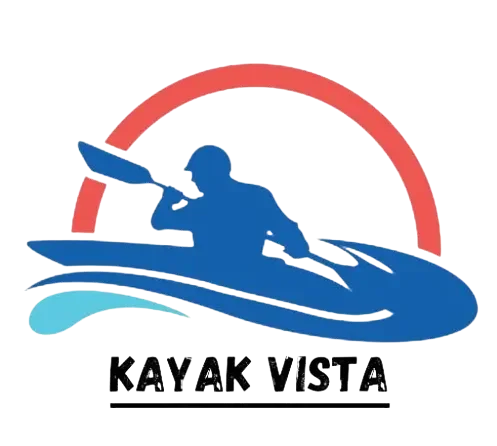
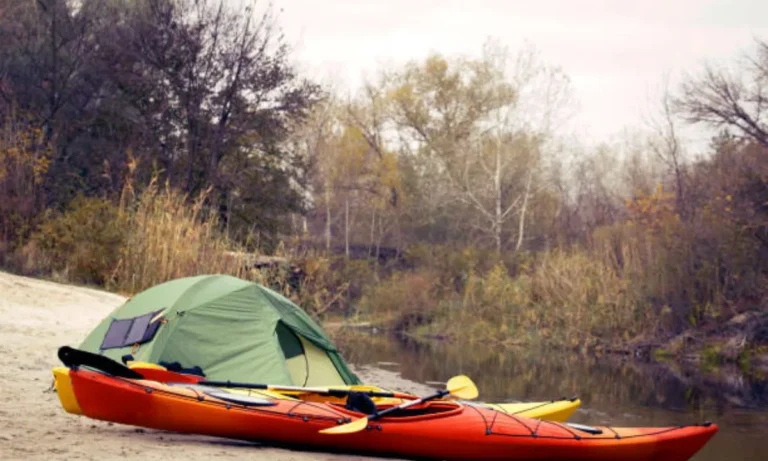
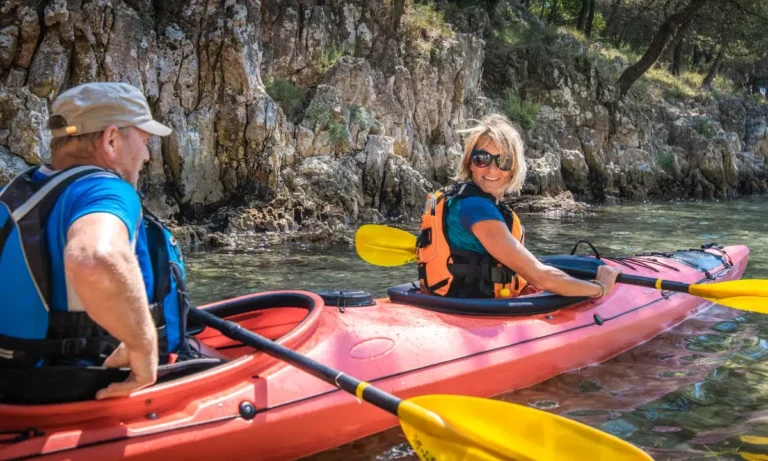
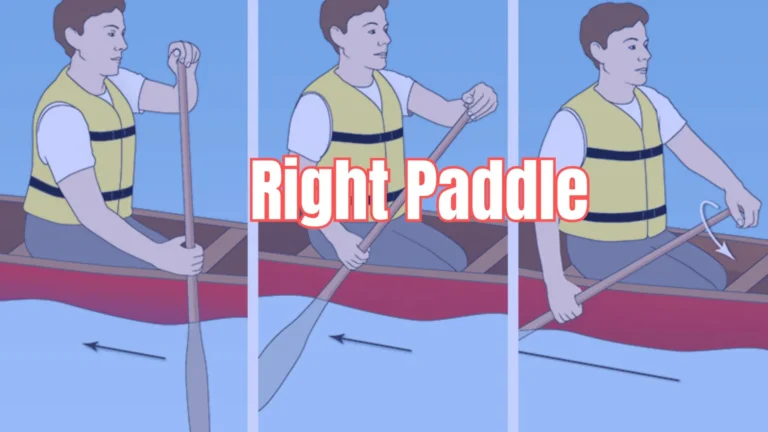


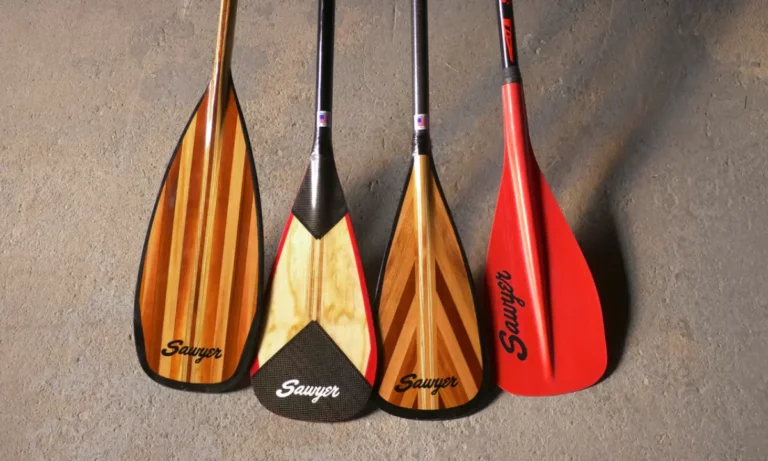
4 Comments